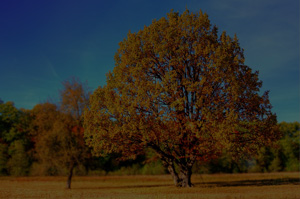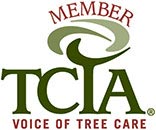Planting a new tree is more than just digging a hole and adding something to the earth. A tree is a long-term investment. It’s part of the overall curb appeal of your home, it can provide shade and energy savings, and trees are also an incredibly important part of our ecosystem.
For more than 30 years, Precision Landscape & Tree has been planting trees for homeowners the right way. Climate plays an important role in planting. Newly planted trees do best when exposed to moderate temperatures and rainfall. They need time to root and acclimatize before the heat and dryness of the summer or the freezing temperatures in the winter months, which generally makes the spring (or late winter) and early fall the best times to plant.
In addition, depending on your yard’s conditions, one species of tree may be a better choice than another. For example, oak trees like a certain degree of acidity in the soil, while willow trees love an excessively moist soil. Other things homeowners might consider is the size, privacy, shade, and color that a tree may offer.
Our arborists can advise you on what the best tree for your yard is, and Precision can also do the planting for you. But, if you’re set on planting something yourself, here are some step-by-step directions on how to do it:
No. 1: Prepare a hole two- to three times as wide as the root ball of your tree
The most common mistake you can make is digging a hole that is too deep and narrow. If the hole is too deep, the roots will not have access to a sufficient amount of oxygen to ensure proper growth. If the hole is too narrow, the roots will not be able to expand enough to be able to nourish and structure the tree properly.
Before you start the actual digging process, spread a plastic tarp on the ground to the side where you plan on depositing the dirt. This will make it easier when you have to refill the hole. After the perfect hole is dug, you should then roughen the sides and bottom with a pick or shovel. This will help the roots grow strong into the soil.
No. 2: Place the tree in the hole
Be firm yet cautious when removing the tree from the container. This is best done by laying the tree on its side with the container near the hole you just created. Speed is a very important factor in this process. You want to move quickly yet cautiously so the root or rootballs don’t dry out. Once your tree is removed, loosen the roots from the sides and bottoms with your hands, then gently uncurl the roots so that they are facing away from the trunk. This ensures they won’t cut into the trunk as it expands.
No. 3: Position the tree where you want it
Move the branches so that they are not in the way of anything. (Fifteen inches from power lines, other trees, and roads is a good measure to stick to.) If you prefer to see a certain side, you can turn your tree to be in the viewpoint you want. If you choose to turn the tree, make sure you are lifting it by the root ball and not by the tree trunk base itself.
Have the root ball sitting a half-inch to 1-inch above the surrounding soil surface so that it will not rot as it grows later on. Fill around the root ball with the loose soil from your tarp. Use your heel or the handle of your shovel to press down on the dirt to collapse any large air pockets in the soil. This will help stabilize the tree in the hole. While doing this, constantly check the trunk of the tree to ensure that it's straight.
No. 4: Supporting your tree
A big mistake often made is over-staking trees. If your tree is sturdy, there is no need for extra support. If your tree does need support, make sure to place the stakes outside of the area you just soiled on opposite sides, approximately 18 inches from the trunk. From the stakes, place tree tape loosely around the trunk. The ties should be loose enough to allow the tree to move back and forth slightly in high wind. Stakes are usually needed for up to six to 12 months.
No. 5: Water!
Make sure to water the tree shortly after planting it. Your tree is going to need about 15 gallons of water over the next couple of weeks, so continue to consistently water it. After a while, the tree’s roots will have reached the outside soil and will gradually need to be watered less and less.
No. 6: Mulch!
Fertilizer is little to no help and could even be harmful to your new tree, but do go for mulch. Cover the planting area with a four-inch layer of mulch. Keep it at least two inches away from the base of the trunk.
Mulch is good because it keeps the topsoil at the perfect temperature for root growth, reduces surface evaporation of water, keeps weeds out, slows or stops the grass growth around the tree’s base, and prevents a hard crust from forming on the soil surface. It also is a great reminder to not step or mow around the tree.
Another great benefit to newly planted trees is Mycorrhizal Fungi. Adding this fungus to your soil will help promote the growth of the roots and discourage damaging fungi that could ruin the tree’s development.
No. 7: Check your work
Now that your tree has been planted, there are two common situations you want to make sure you avoid:
Drowning: Double check the root moisture of your newly planted tree. The soil surface conditions are much different than what’s underneath, so do not let that fool you. Check the soil 4 to 6 inches deep. You want the soil to be moist and not soggy. Sprinklers are a very good way to not only save water but save you from this problem.
Suffocation: You want to avoid planting your tree too deep in the soil. The root crown, which is where the trunk meets the roots, should be 1-1/2 inches to 2 inches above ground level.
No. 8: Keep up on pruning
Now that your tree is safe and sound in the ground, it’s critical to keep up on its pruning. According to TreesAreGood.com, starting to prune your trees while they are young will mean easier maintenance in the future and less corrective action in the future.
Pruning after the coldest part of the winter has passed is the most common time to prune. Trimming during the tree’s dormancy allows for a very fertile spring. Pruning in the summer after your tree’s seasonal growth is over, is also an option if you aren’t a fan of the cold.
The tree you add to your yard may require some special attention for a while, but the shade, beauty and environmental benefits it provides to our home, neighborhood and planet are well worth it.
If you have questions or want more information, give Precision a call at 651-484-2726.
Resources:
http://www.precisiontreemn.com/tips/diy-pruning-tips.html
http://www.treepeople.org/plant-right-way
http://www.diynetwork.com/outdoors/the-right-way-to-plant-a-tree/pictures/page-7.html
http://www.bhg.com/gardening/trees-shrubs-vines/care/the-proper-way-to-plant-a-tree/
http://www.treehelp.com/how-to-plant-a-tree/
http://www.treesaregood.com/treecare/resources/pruning_youngtrees.pdf











